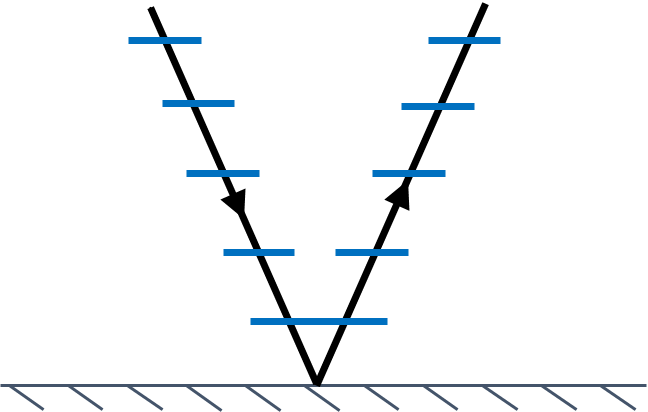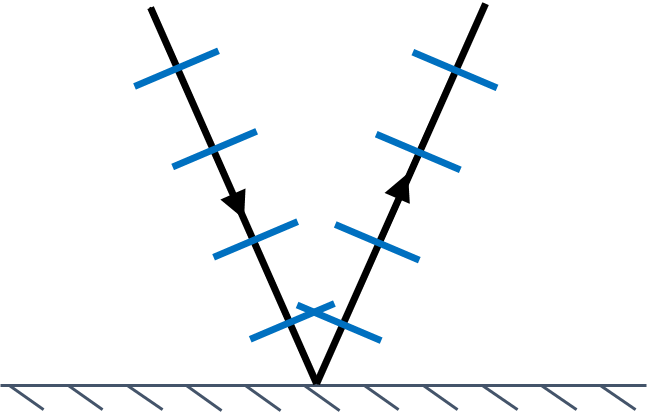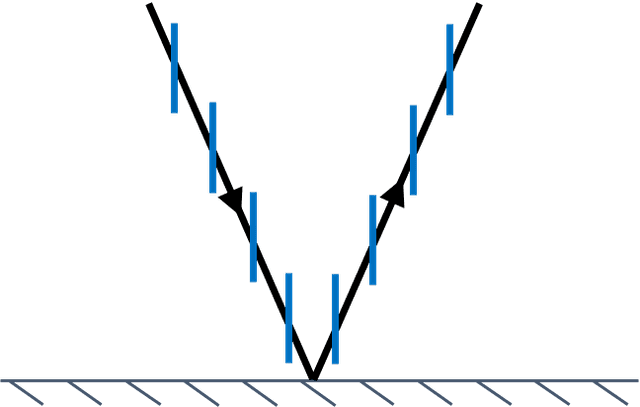Myths about teaching can hold you back
- Year 11
- AQA
- Foundation
Reflection of light
I can recognise, draw and describe how light and other waves can reflect from different surfaces, using rays and wavefronts.
- Year 11
- AQA
- Foundation
Reflection of light
I can recognise, draw and describe how light and other waves can reflect from different surfaces, using rays and wavefronts.
These resources were made for remote use during the pandemic, not classroom teaching.
Switch to our new teaching resources now - designed by teachers and leading subject experts, and tested in classrooms.
Lesson details
Key learning points
- Different surfaces can scatter light or reflect light in a regular way.
- The angle of incidence equals the angle of reflection. Angles are measured from the normal.
- Light can be thought of as a wave (ripples) in electric and magnetic fields.
- Like all waves, light can be represented using rays or wavefronts.
Keywords
Ray - A ray is a straight line drawn to represent the direction that a light wave travels.
Normal - The normal is an imaginary line drawn at 90° to a surface.
Wavefront - Wavefronts are lines drawn to represent peaks of a wave.
Common misconception
Pupils often think that light rays are actual physical things that are the constituents of light.
It needs to be made explicit through teaching that light rays are imaginary lines that show the direction in which light is travelling.
To help you plan your year 11 combined science lesson on: Reflection of light, download all teaching resources for free and adapt to suit your pupils' needs...
To help you plan your year 11 combined science lesson on: Reflection of light, download all teaching resources for free and adapt to suit your pupils' needs.
The starter quiz will activate and check your pupils' prior knowledge, with versions available both with and without answers in PDF format.
We use learning cycles to break down learning into key concepts or ideas linked to the learning outcome. Each learning cycle features explanations with checks for understanding and practice tasks with feedback. All of this is found in our slide decks, ready for you to download and edit. The practice tasks are also available as printable worksheets and some lessons have additional materials with extra material you might need for teaching the lesson.
The assessment exit quiz will test your pupils' understanding of the key learning points.
Our video is a tool for planning, showing how other teachers might teach the lesson, offering helpful tips, modelled explanations and inspiration for your own delivery in the classroom. Plus, you can set it as homework or revision for pupils and keep their learning on track by sharing an online pupil version of this lesson.
Explore more key stage 4 combined science lessons from the Electromagnetic waves unit, dive into the full secondary combined science curriculum, or learn more about lesson planning.

Equipment
Licence
Prior knowledge starter quiz
6 Questions
Q1.Match each angle to its description.
this is the angle between one side of a square and the next side
if you turn by this angle, you face in the opposite direction
if you turn by this angle, you face in the same direction as before
Q2.The protractor is measuring the angle between the two lines. What is the correct measurement?
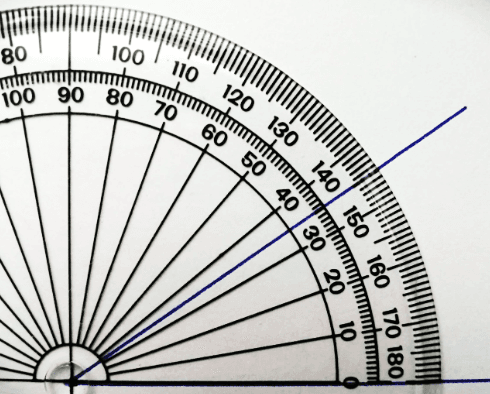
Q3.Which letter is labelling a peak (also called a crest) of this wave?
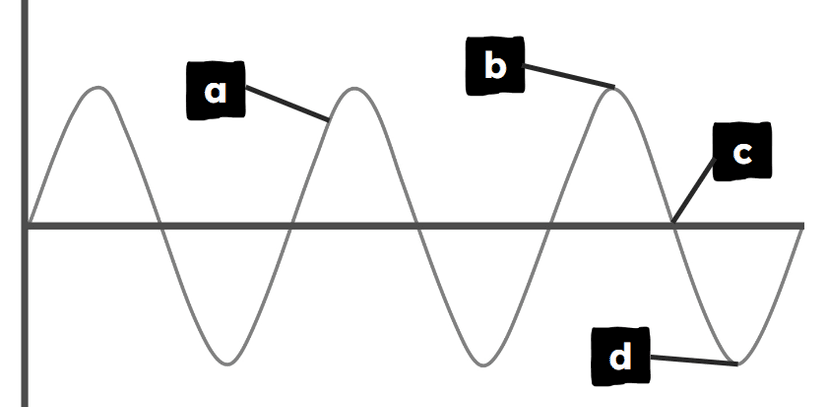
Q4.A person holds a lit candle in front of a mirror and is looking at the candle’s reflection. Starting with where the light is given out, put these objects into the order of the path the light takes.
Q5.What happens to light when it reflects off an object?
Q6.Which letter represents one wavelength?
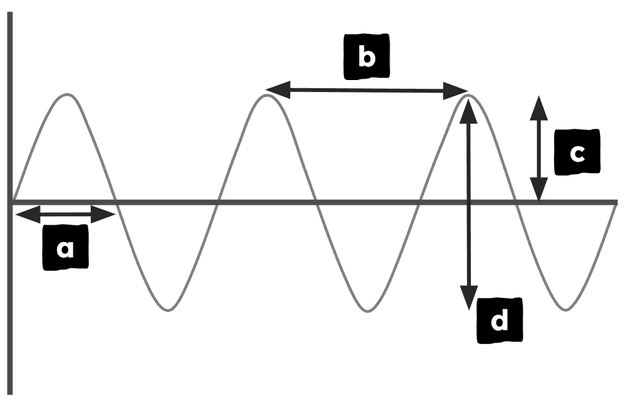
Assessment exit quiz
6 Questions
Q1.Match each word with its definition.
an imaginary line drawn at 90° to a surface
a straight line drawn to show the direction a wave travels
a line drawn to represent where the peak of a wave is
Q2.A ray diagram shows a light ray. Which statement about the ray is correct?
Q3.A person speaks to another person across a room. Which statements are correct?
Q4.Which statement describes the law of reflection?
Q5.Here is a ray diagram for the reflection of a wave. In which diagram is the angle of reflection shaded?
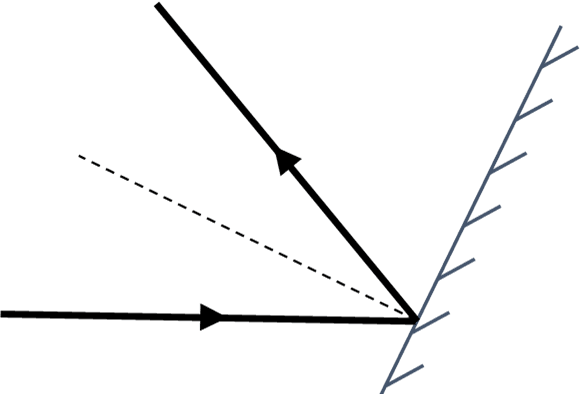
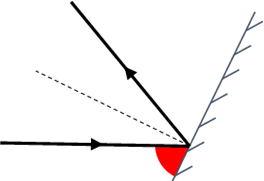
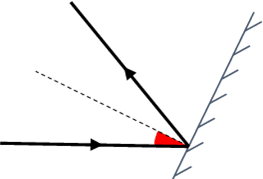
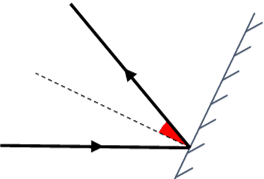
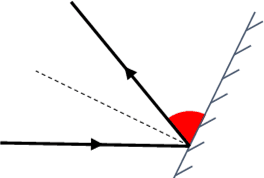
Q6.The ray diagram represents the reflection of a light wave by a mirror. Which diagram correctly shows the wavefronts?

